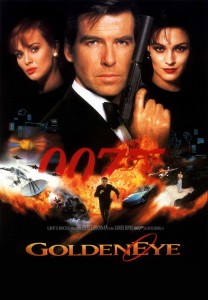The article that I found most interesting this week was Judith Halberstam’s “Female Masculinity,” maybe because I had never read this text before, and also I like that it comes from a 1998 book (relatively recent). I found her argument that “what we understand as heroic masculinity has been produced by and across both male and female bodies” to be very interesting, and when coupled with the pop culture examples she gave, also very convincing. I had never thought about the construction of masculinity as a phenomenon that is so intrinsically linked with alternative masculinities; as Halberstam explains, “masculinity becomes legible as masculinity where and when it leaves the while male middle-class body” (936) and “the shapes and forms of modern masculinity are best showcased within female masculinity” (936). What I also found very interesting was her assertion that “although we seem to have a difficult time defining masculinity, as a society we have little trouble in recognizing it” (935) – as I read this, I found myself nodding along.
What I would have liked from the article, however (and maybe this is not a valid criticism as it is important to keep in mind that what we read are excerpts and not the entire text) is a closer definition of what exactly we do identify as masculinity, because after reading the excerpt, I still don’t feel as if this question is clear in my mind. I thought the examples of Don Juan and James Bond in Goldeneye (1995) were indeed helpful, especially the more fleshed-out example of James Bond. I found it effective that Halberstam not only pointed out that without his ‘toys’ and equipment a lot of Bond’s masculine flair, if you will, vanishes, but that M, Moneypenny and Agent Q really represent more convincing models of masculinity – and it’s interesting to think of the latest Bond movie, Skyfall (2012) within this paradigm as well, because I think the argument in M’s case especially very much stands. This example was very effective to me as I was reading Halberstam’s argument, especially when she succinctly says that “the masculinity of the white male, what we might call ‘epic masculinity’, depends absolutely […] on a vast subterranean network of secret government groups, well-funded scientists, the army, and an endless supply of both beautiful bad babes and beautiful good babes, and finally it relies heavily on an immediately recognizable ‘bad guy’” (937). This explanation was very helpful as it related to the immediate context of Goldeneye, and as Halberstam pointed out, essentially all other Bond movies, but I would have also benefited from the article providing a broad definition of what exactly it identifies as ‘epic masculinity’ – what the article identified as something that we all have a hard time describing but something that we do quickly recognize. I look forward to furthering this discussion in class if we have time!



Hi, Gabby: I also like very much the text of Halberstam. Not only for the content, but also for the writing style. However, I was asking myself the same question that you pointed out: what can we identify as masculinity. And also, why can define as femininity. At least in the fragment that we have read, these “categories” are not explained. But, I think this happens frequently in academics texts (as we have seen in other classes). It is very difficult to define every term that we can use in an essay. It would be necessary to write another essays to explains the terms. So, I imagine that is why many authors just put some categories and expect the reader to understand them.
(Just to add one more James Bond image; it is from “Octopussy”, one of my favourites): http://www.wallsave.com/wallpapers/1024×768/f-collection-tattoo/293956/f-collection-tattoo-cool-free-james-bond-octopussy-movie-293956.jpg)
Hi Bruno,
Thank you for your very insightful comment and for reading my post! I agree with you that many times authors simply use the terms and expect the reader to know what they mean; it is just that in this essay in particular Halberstam EXPLICITLY posed the question “What is masculinity,” the very opening excerpt, then went on to say that we have a hard time describing it but not recognizing it – so that set up an expectation for me for her to actually come up with a concrete definition in her piece of writing. However, she did; that was the entire argument about how we can see it in alternative masculinities better than in these “epic masculinities” – by looking at alternative masculinities we can actually observe it more concretely – and that was a very interesting argument – what I would have liked even more is for the author to have actually named some of the measures that we can more clearly see in alternative masculinities – what are these actual traits? Resilience? Courage, etc…? Just something I had on my mind as I read the article.